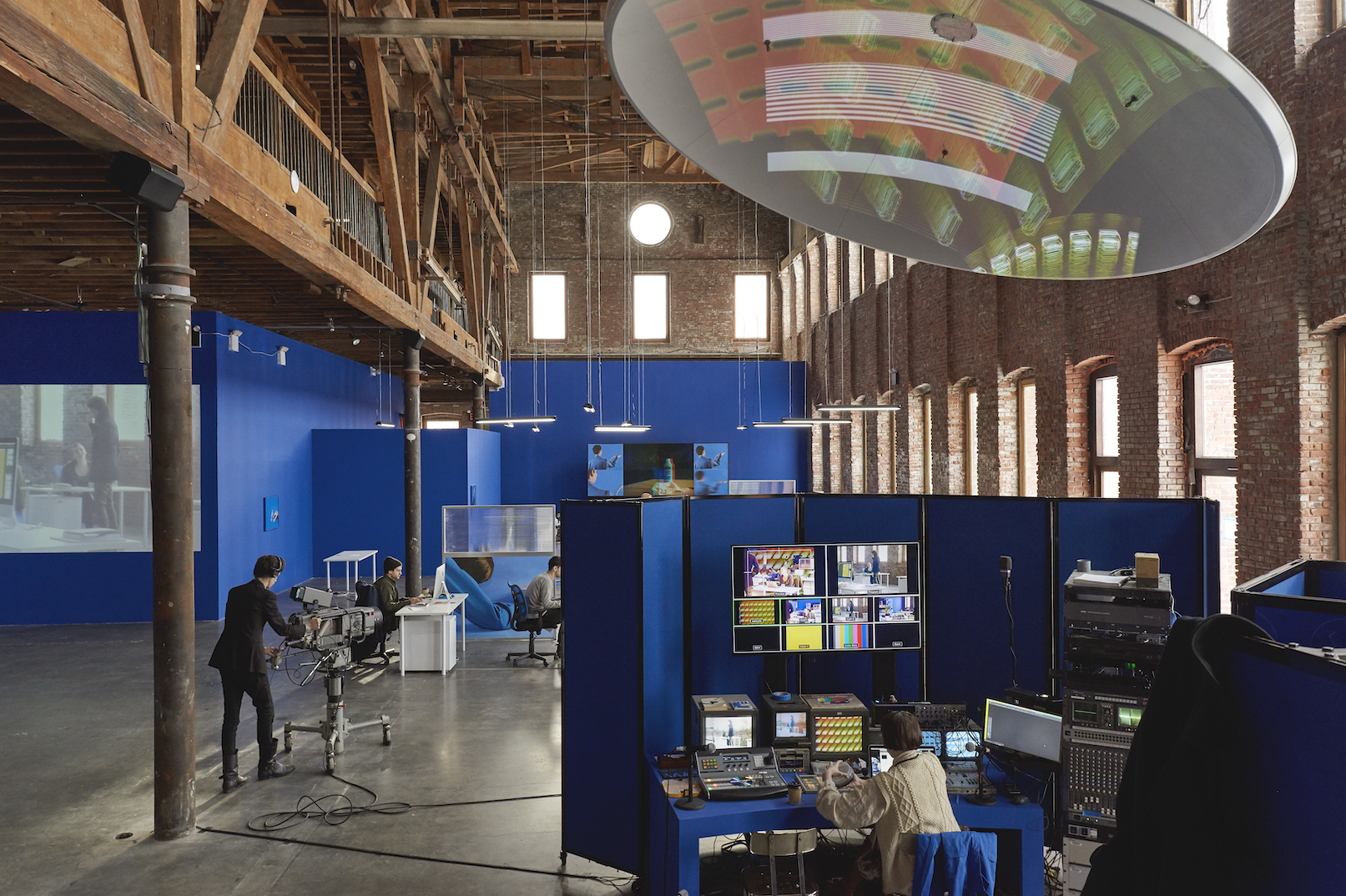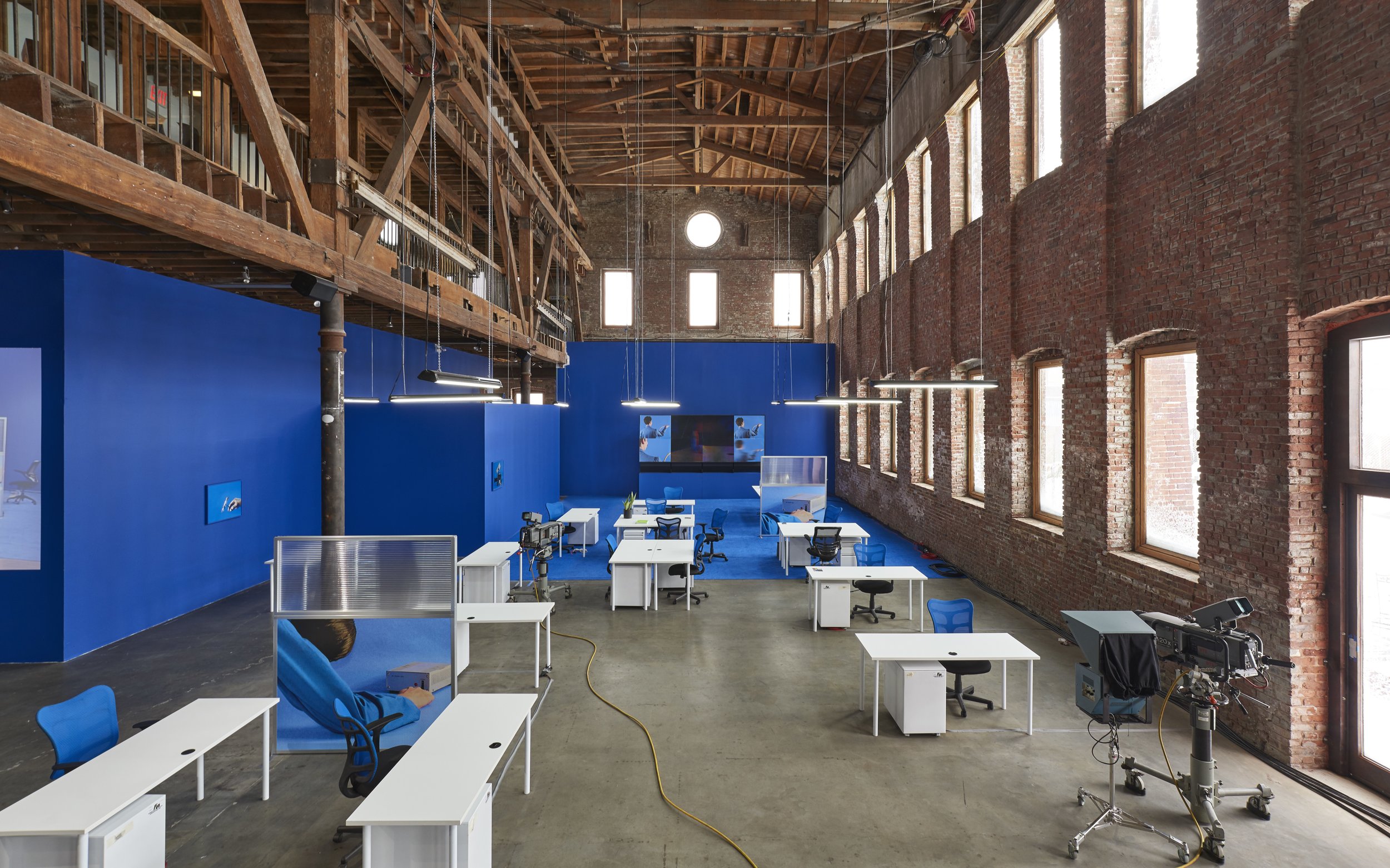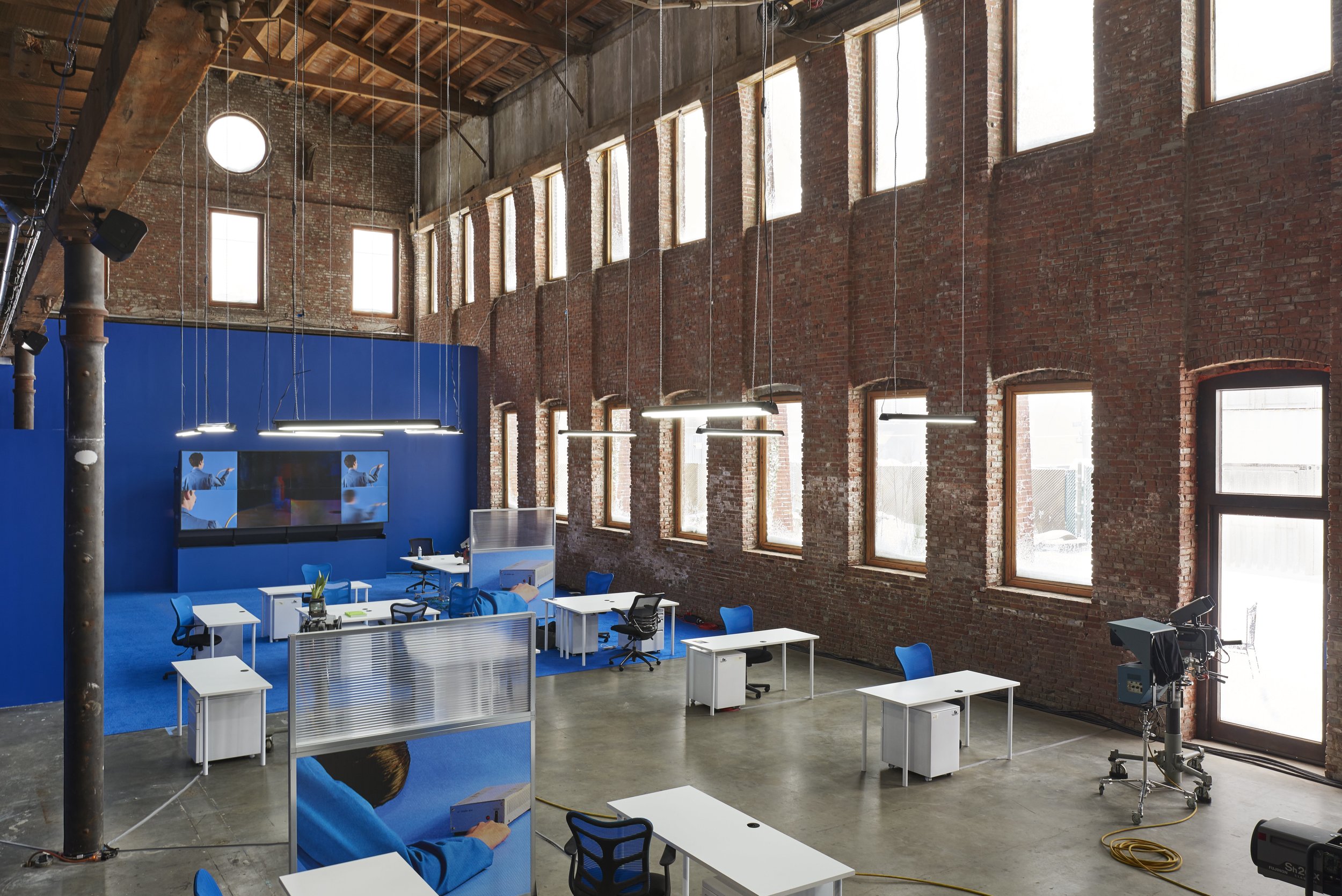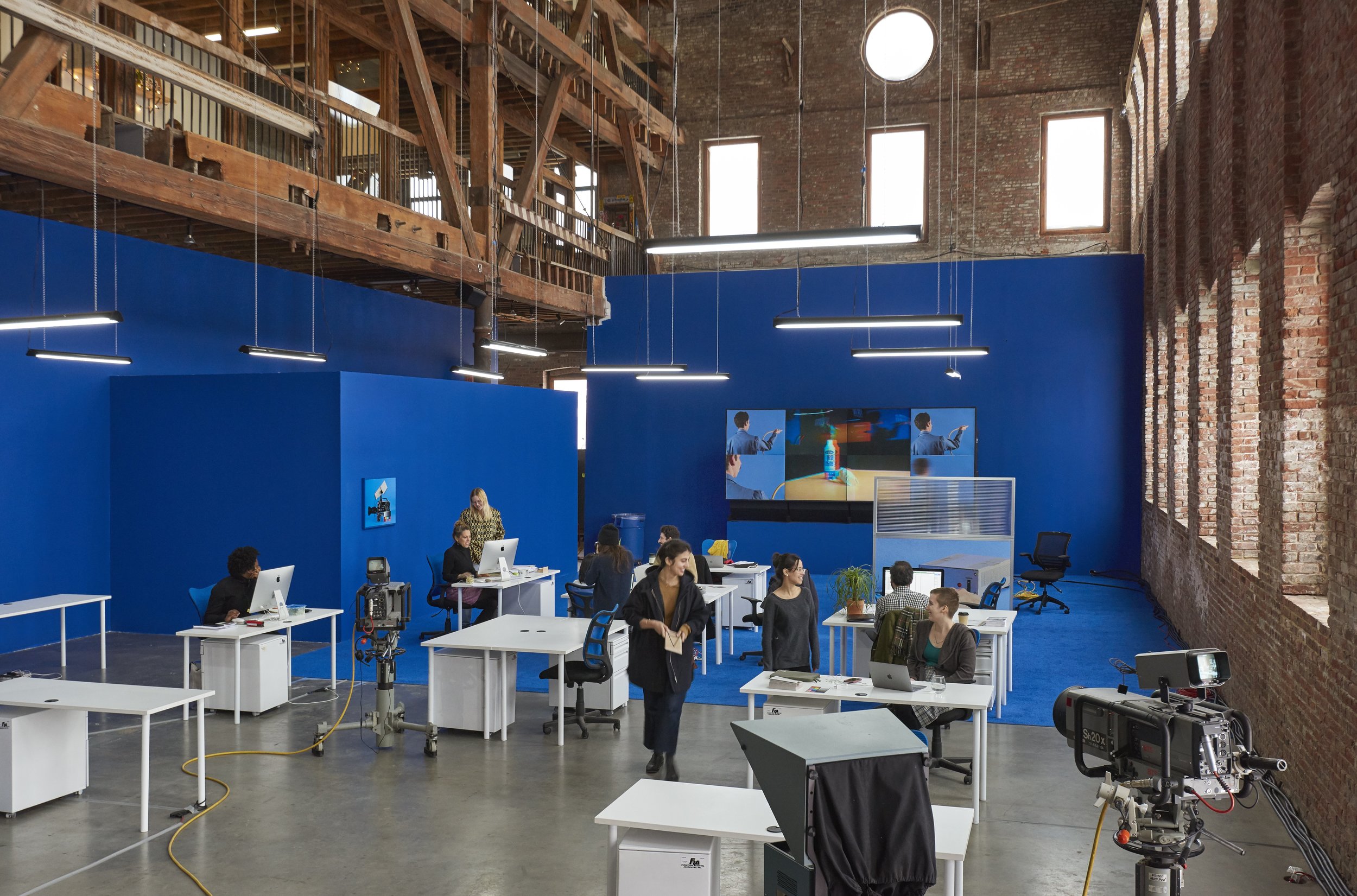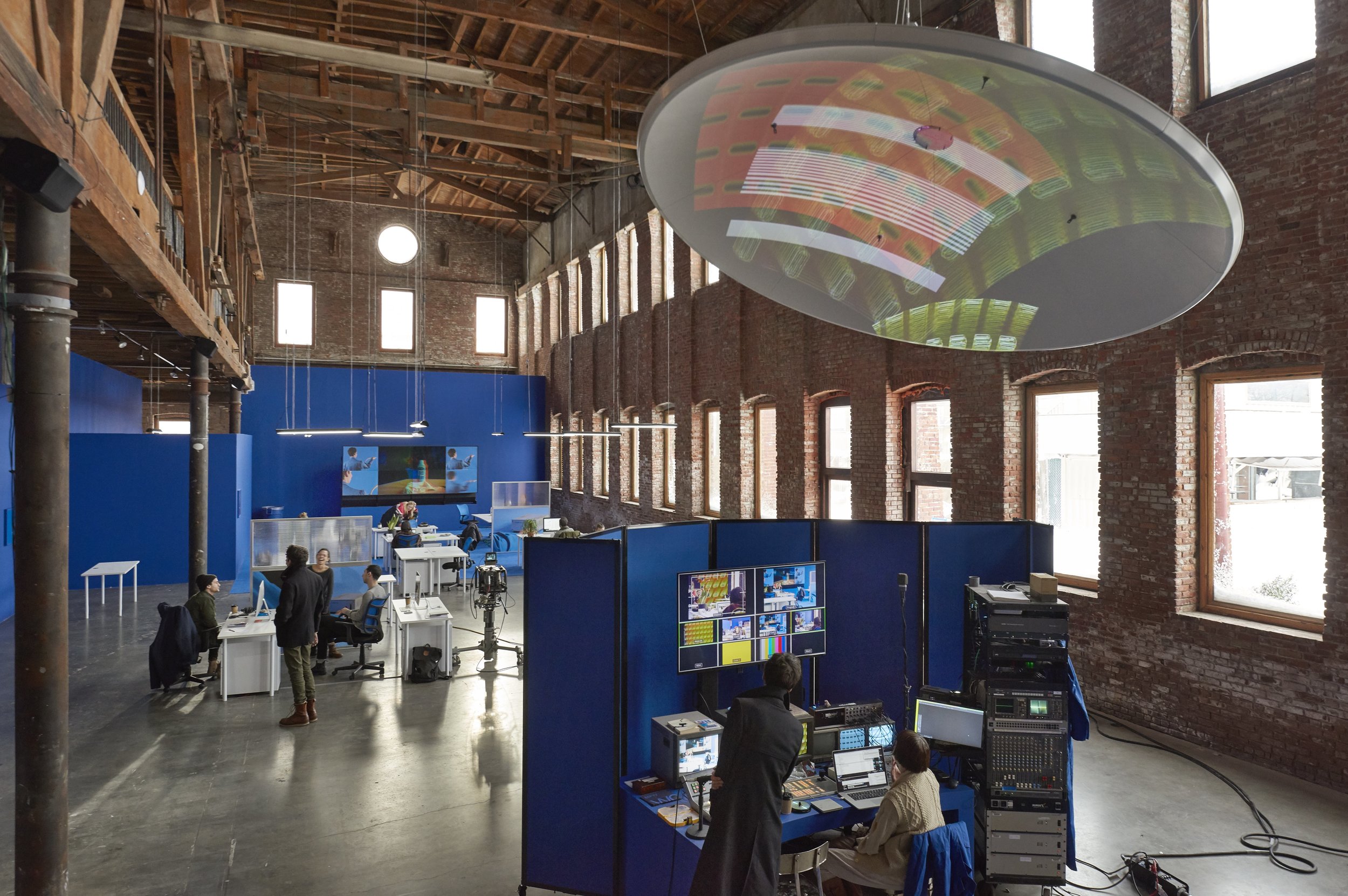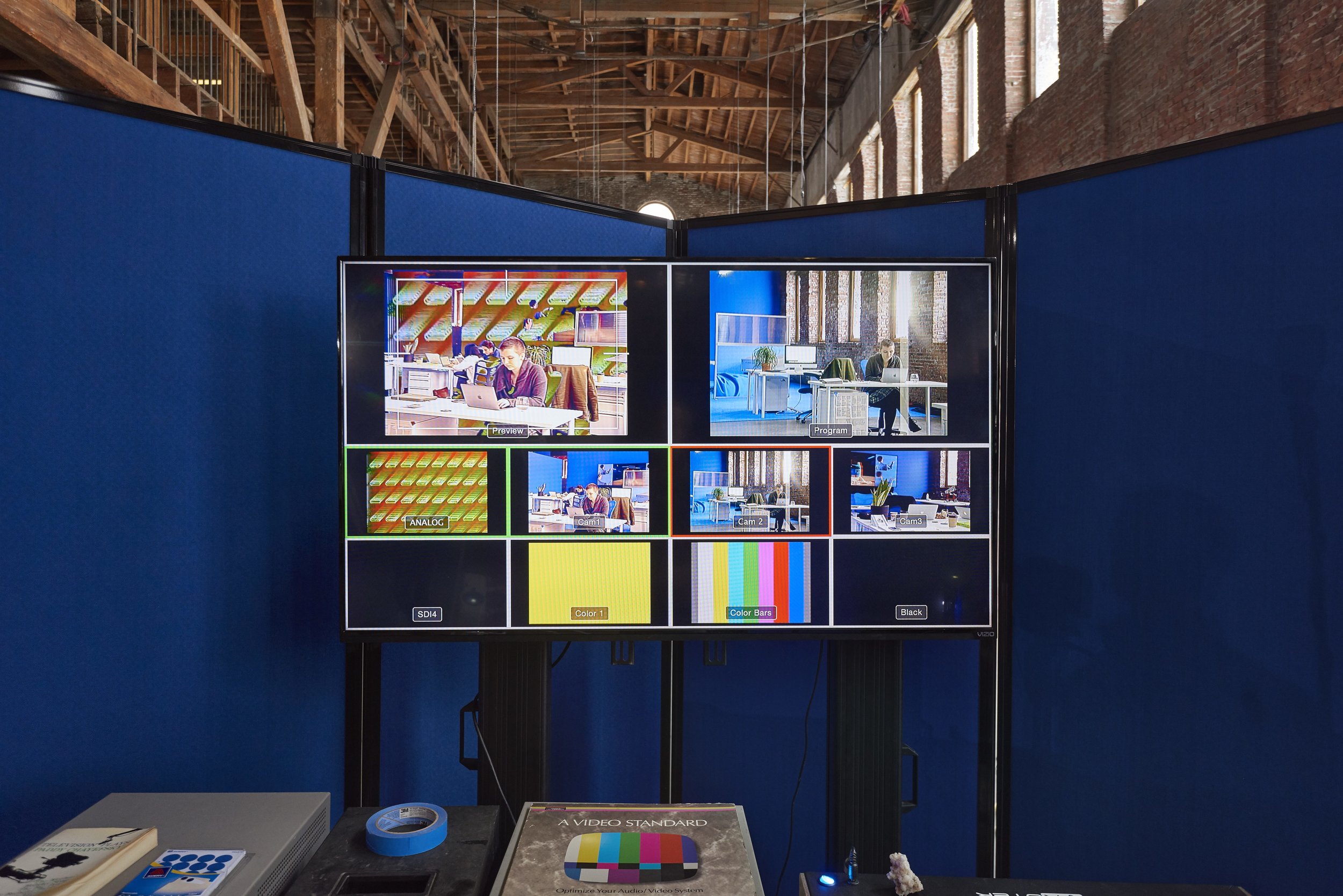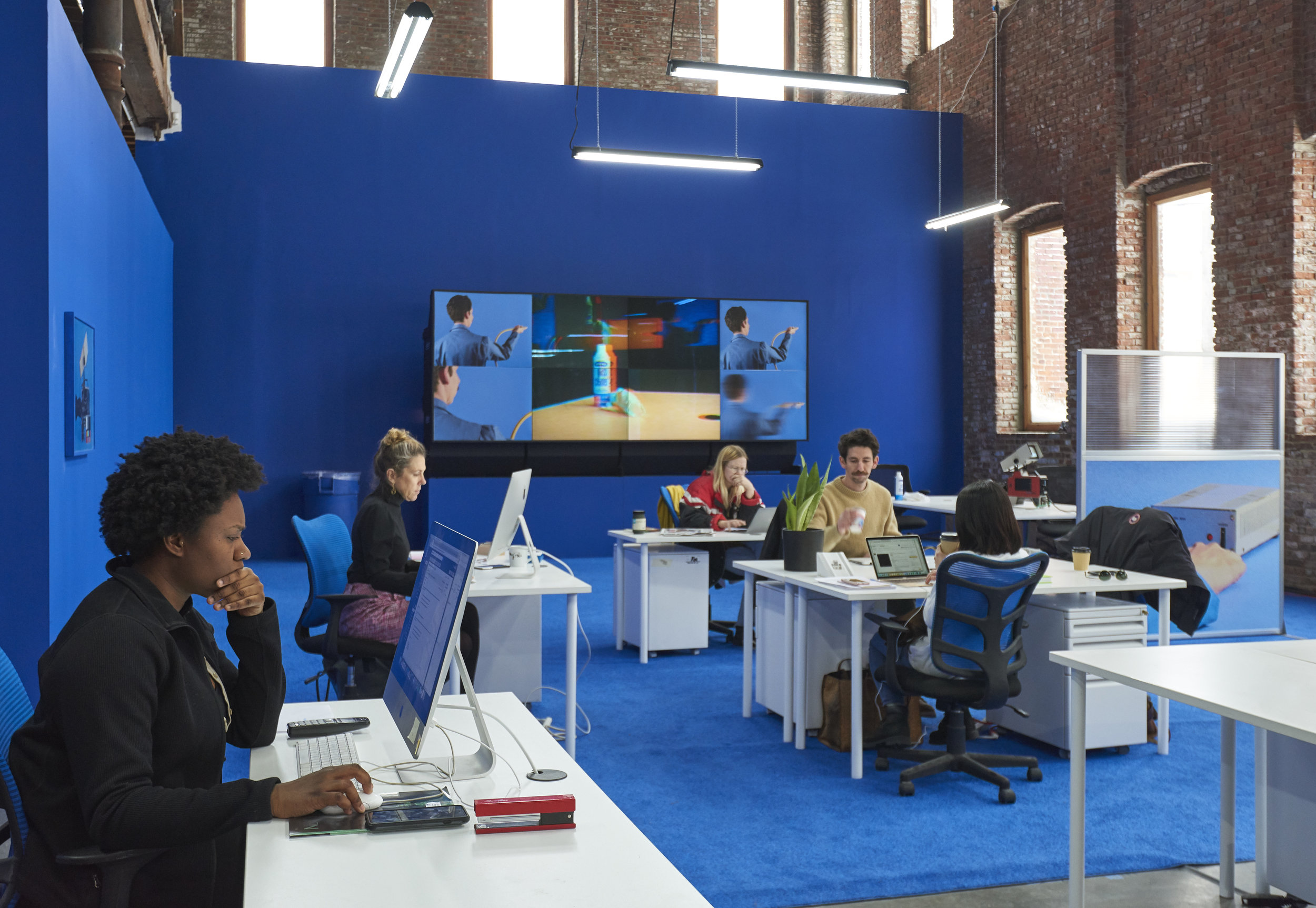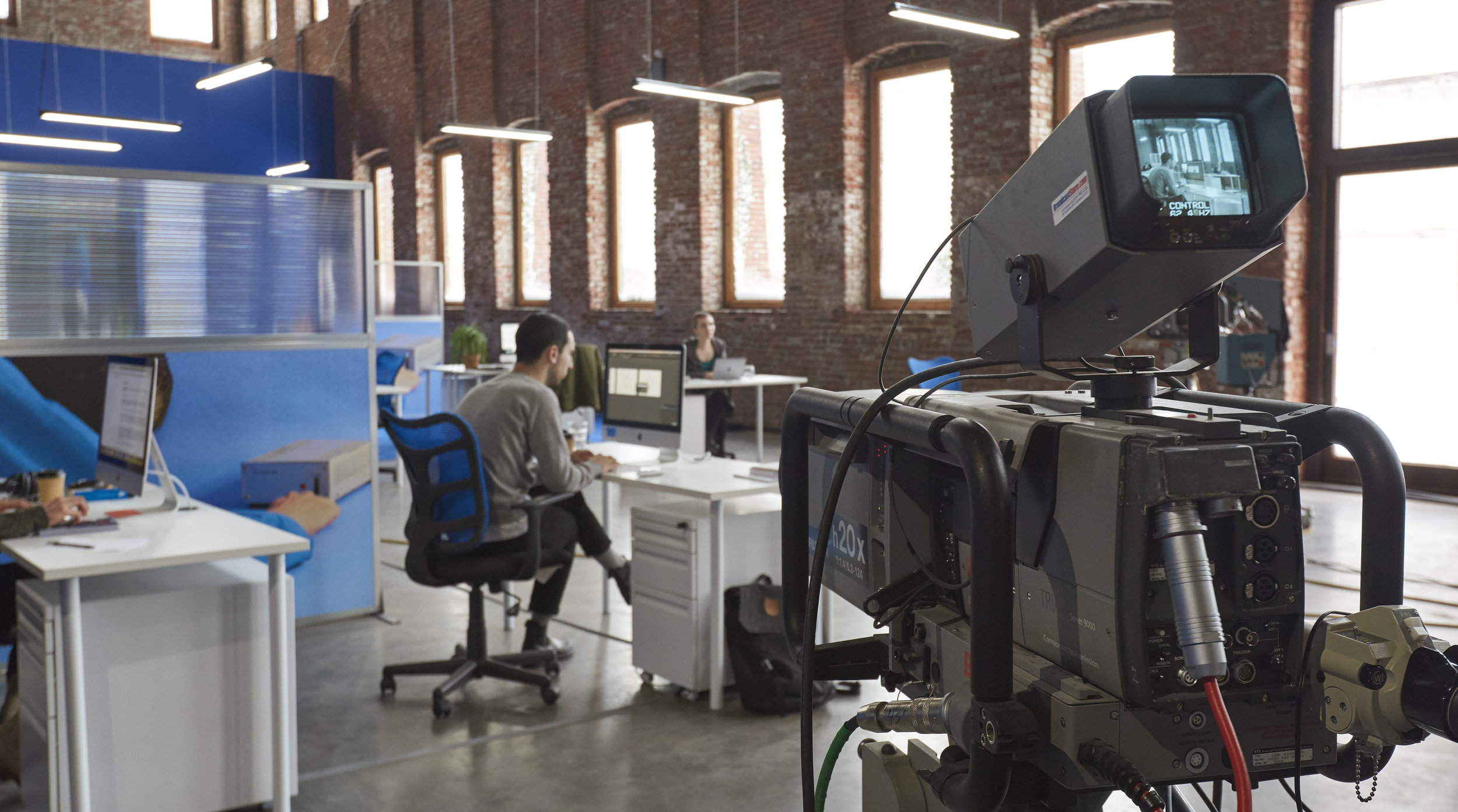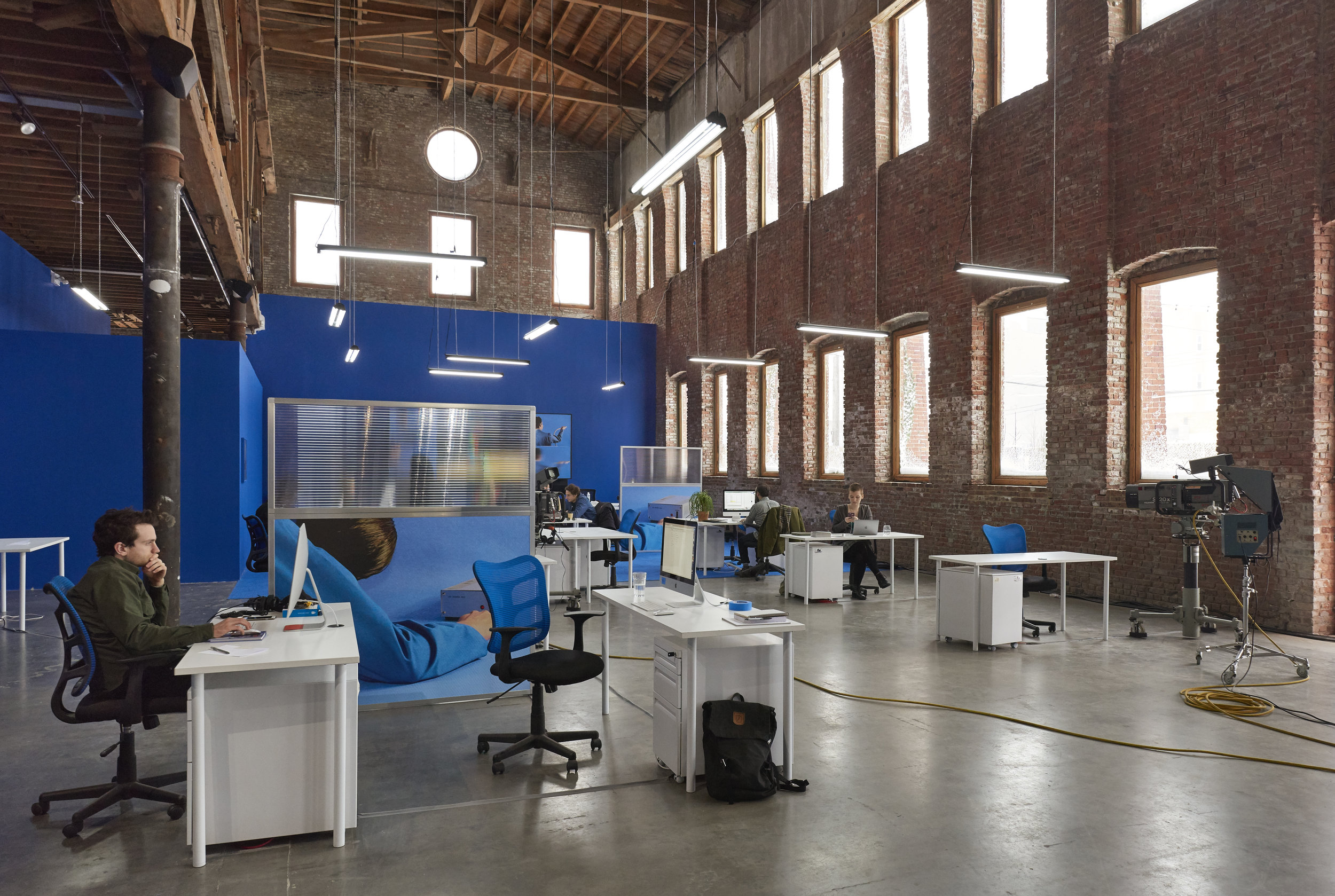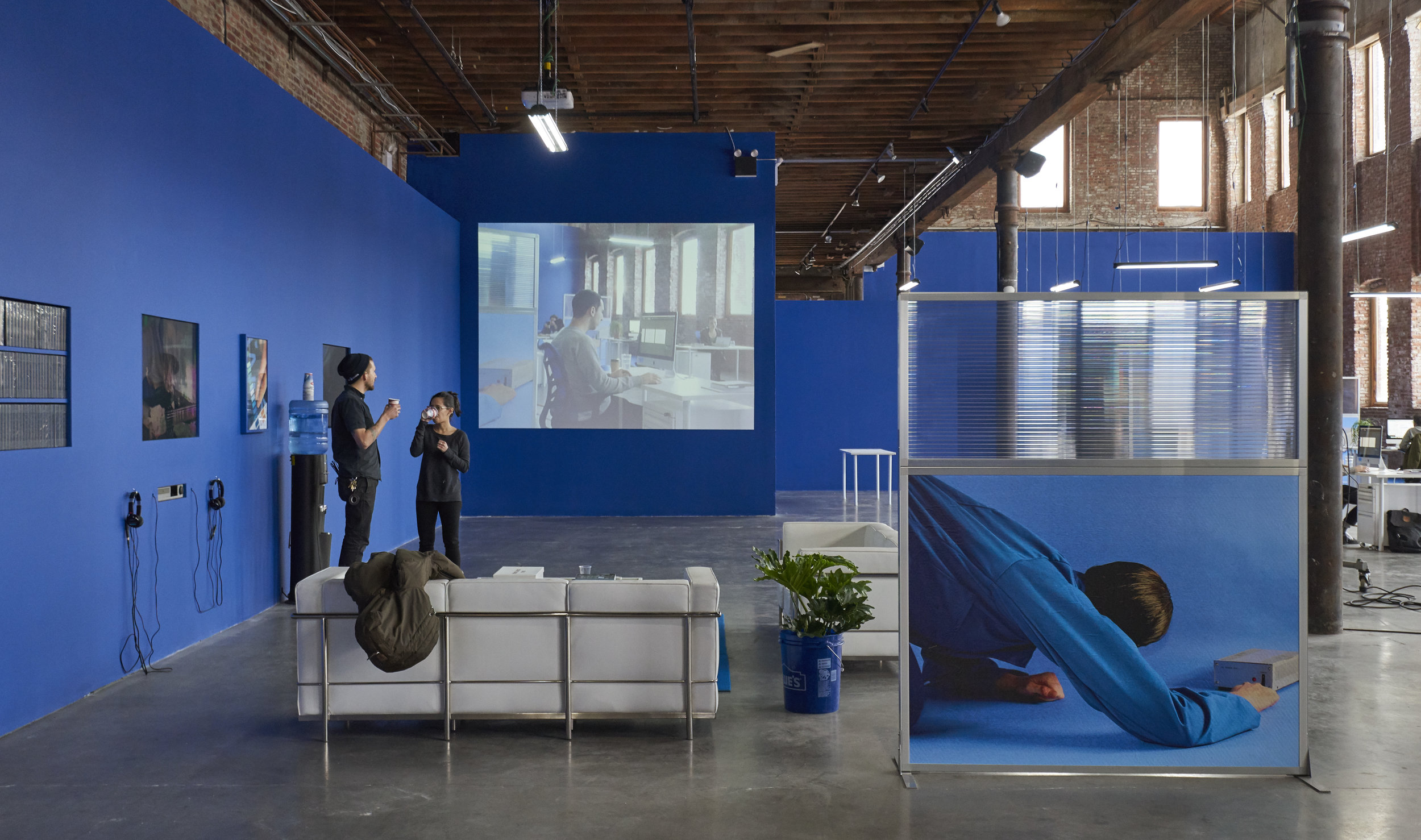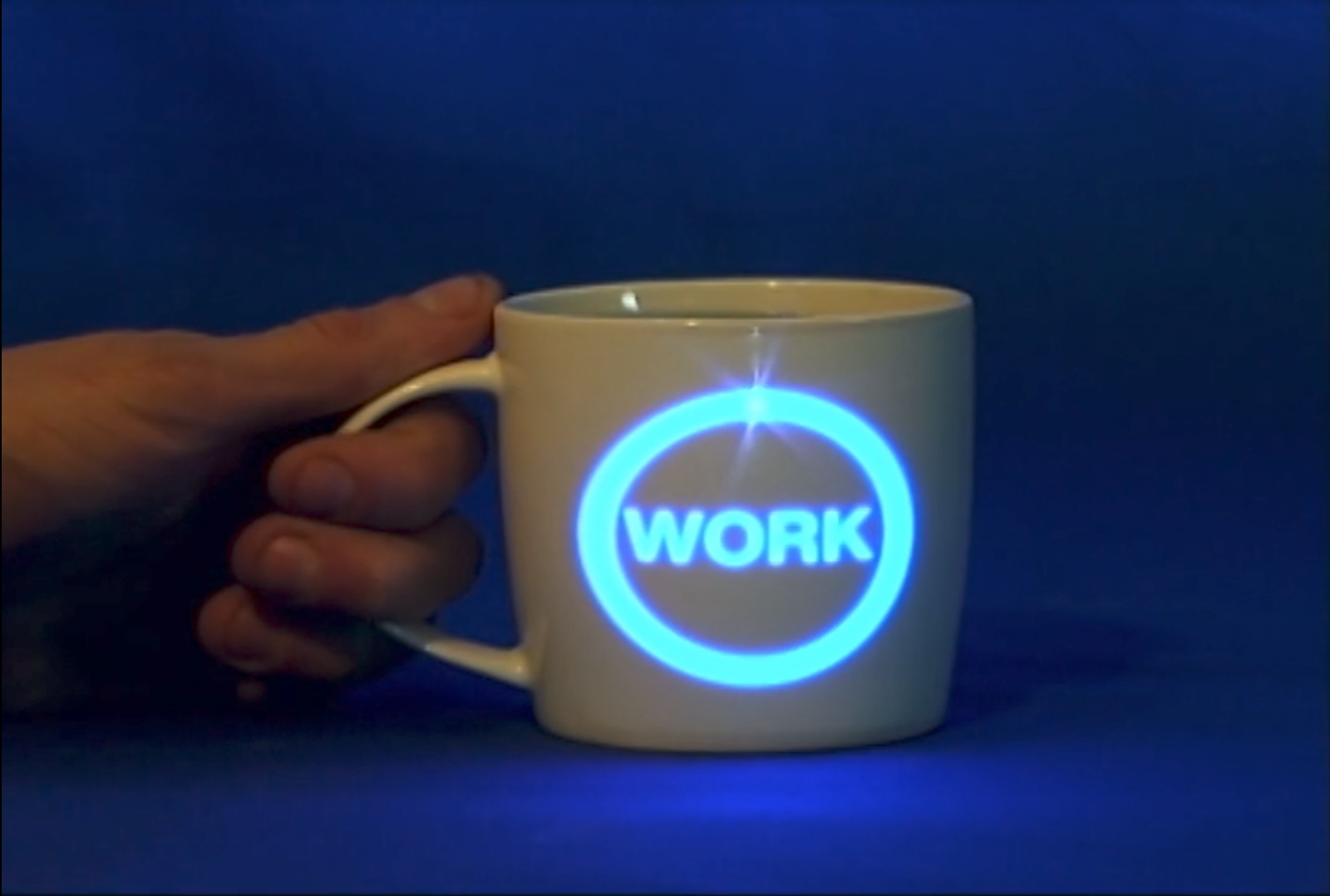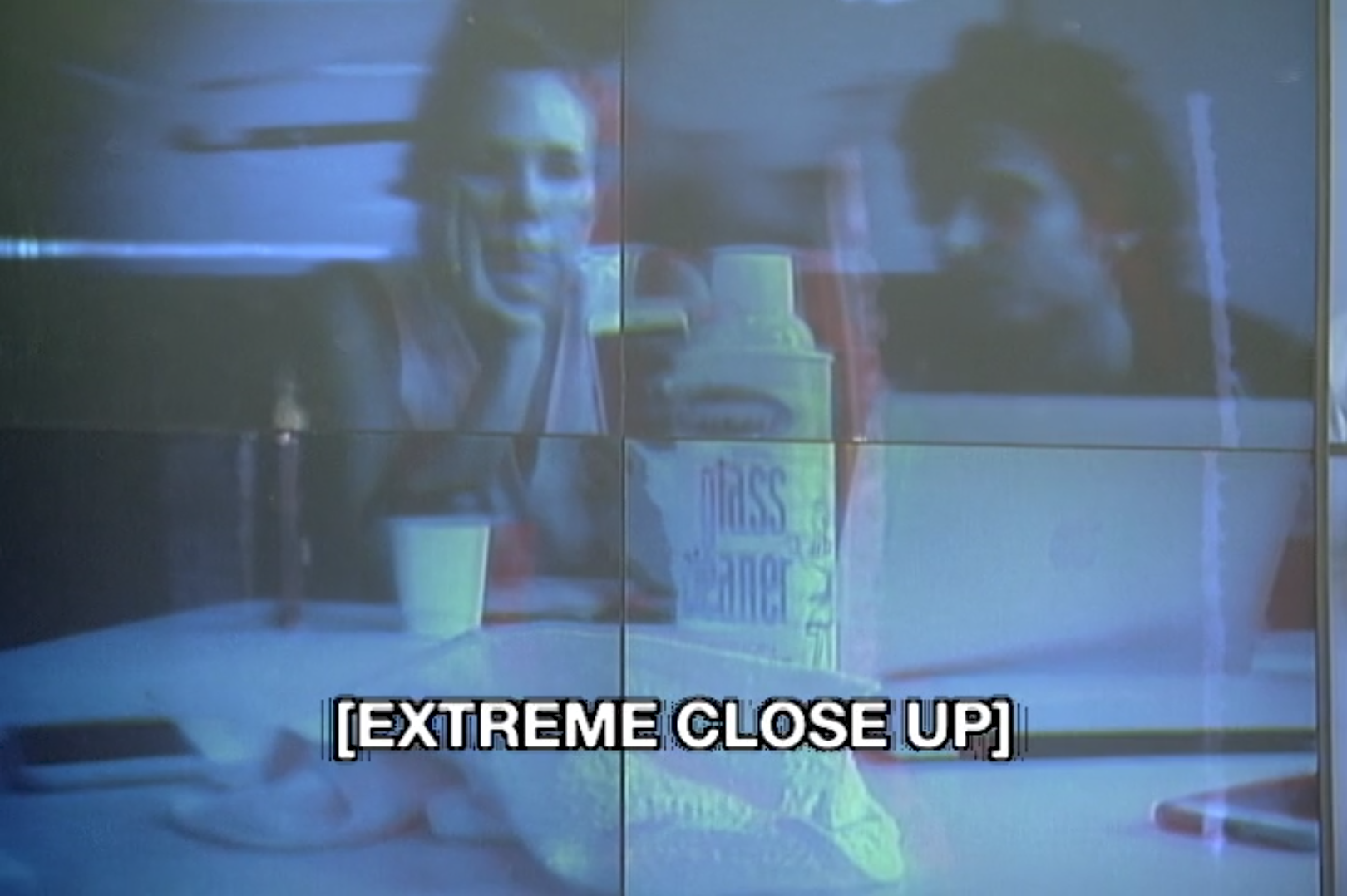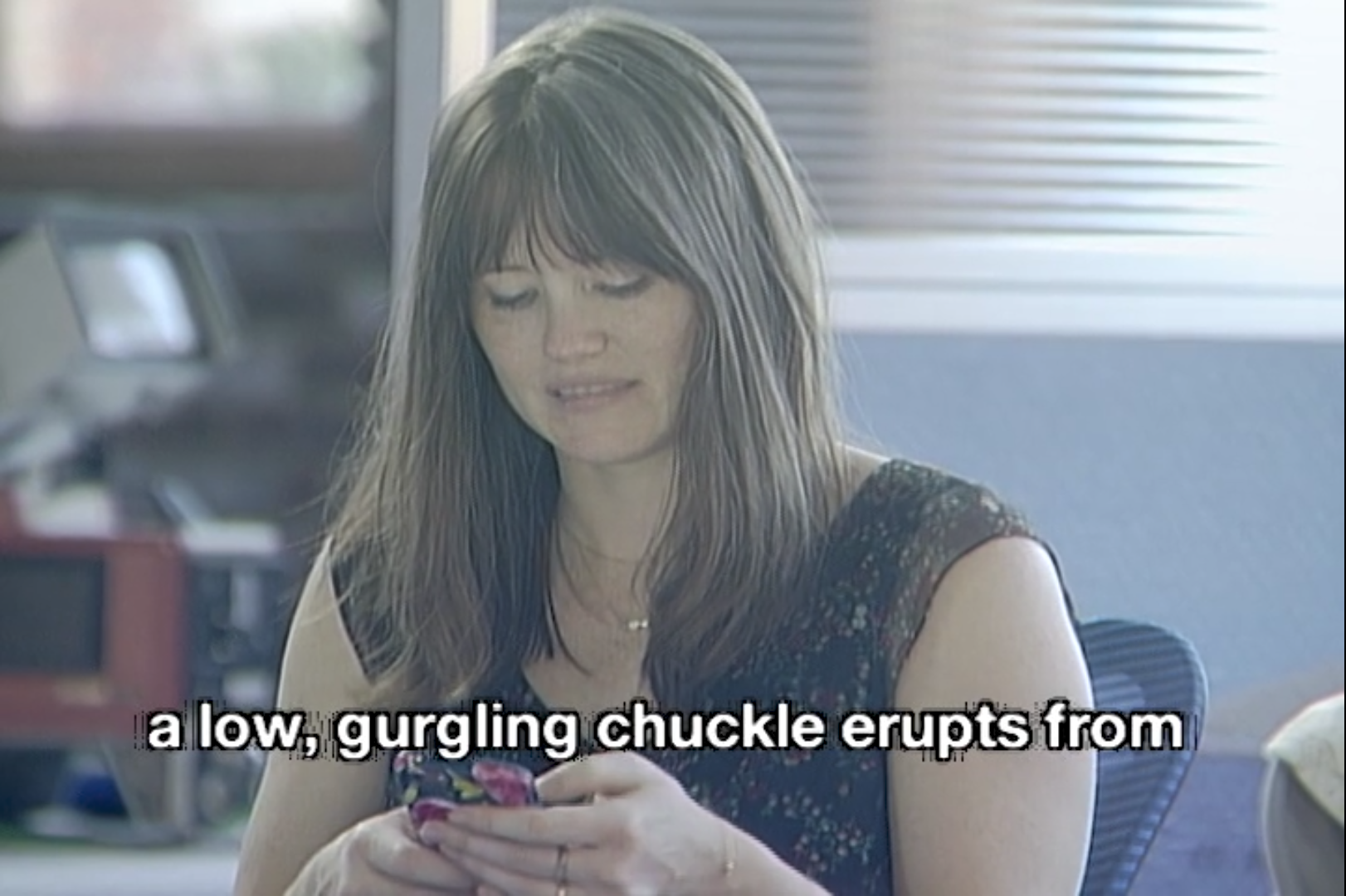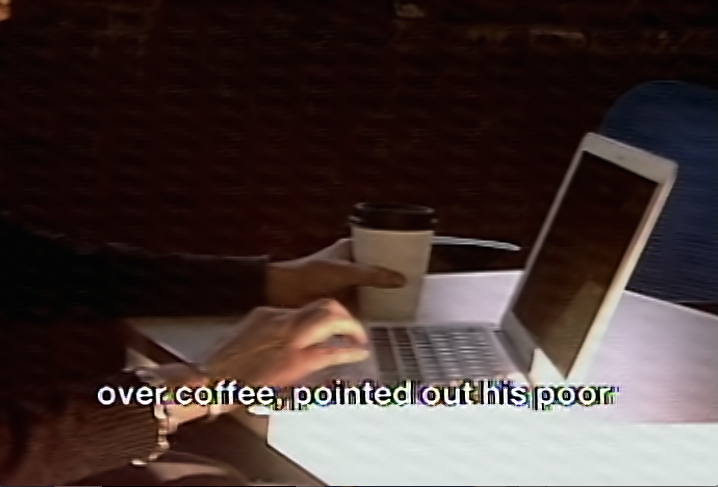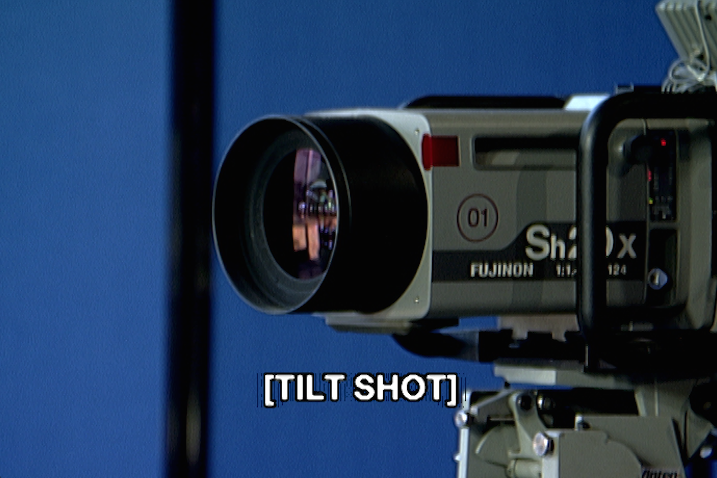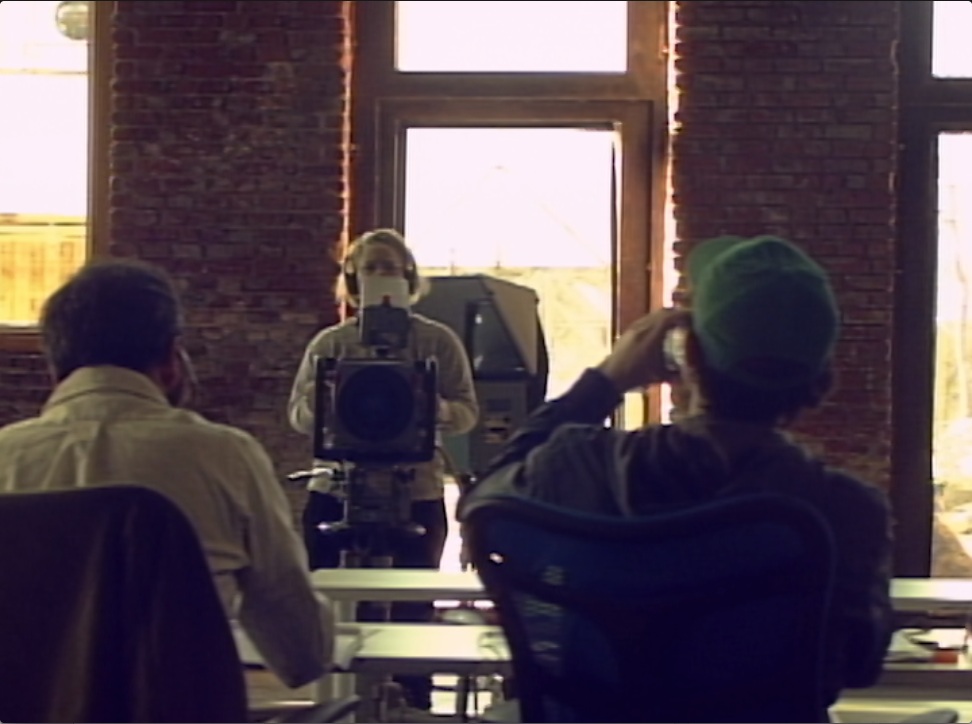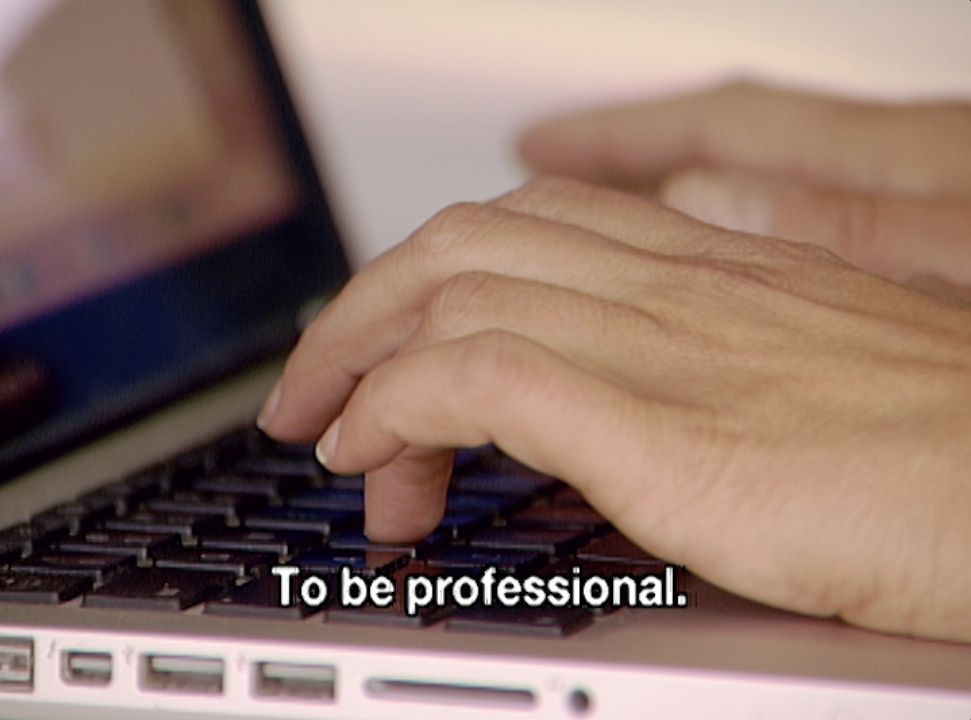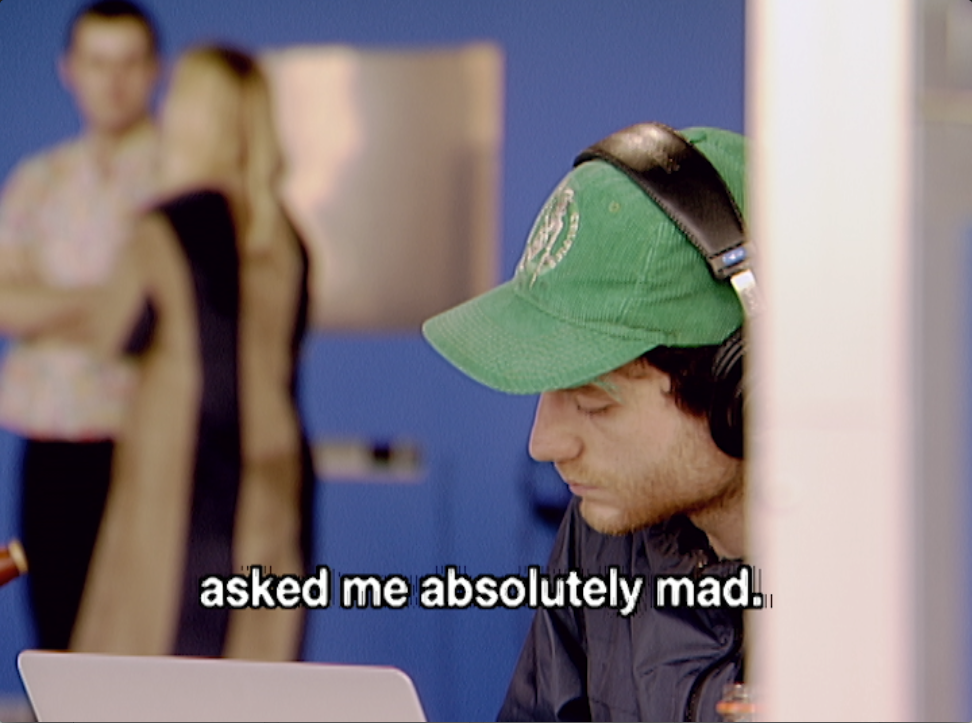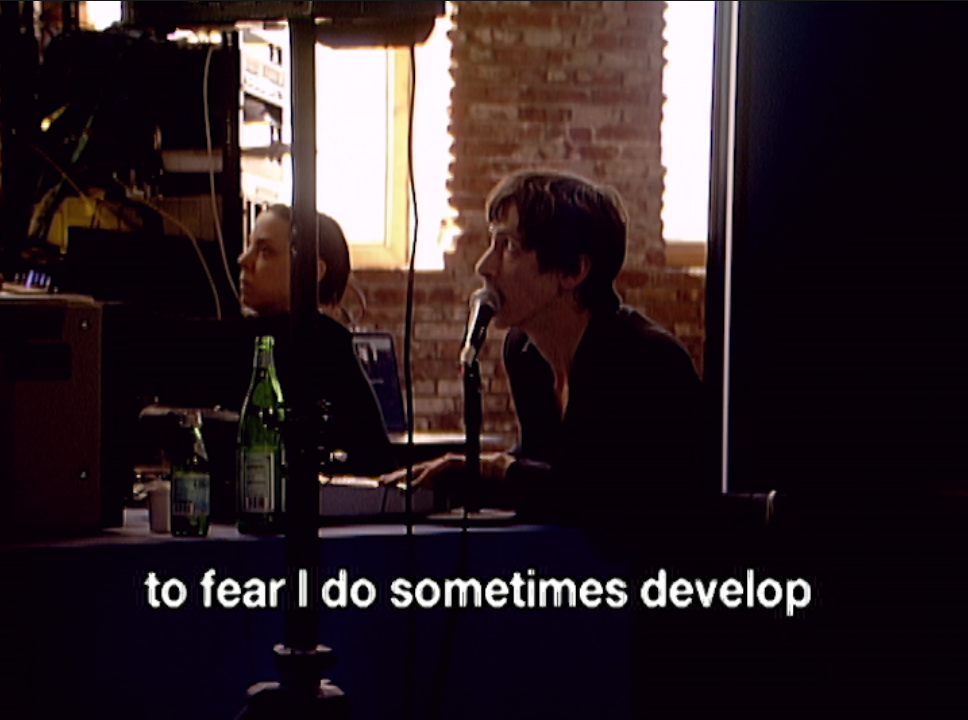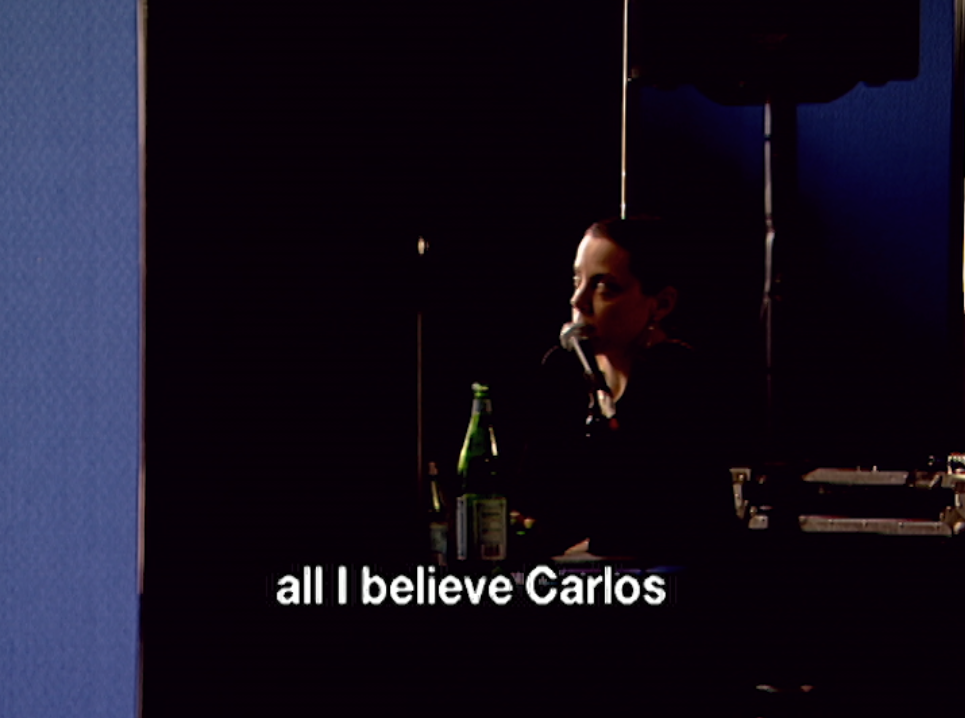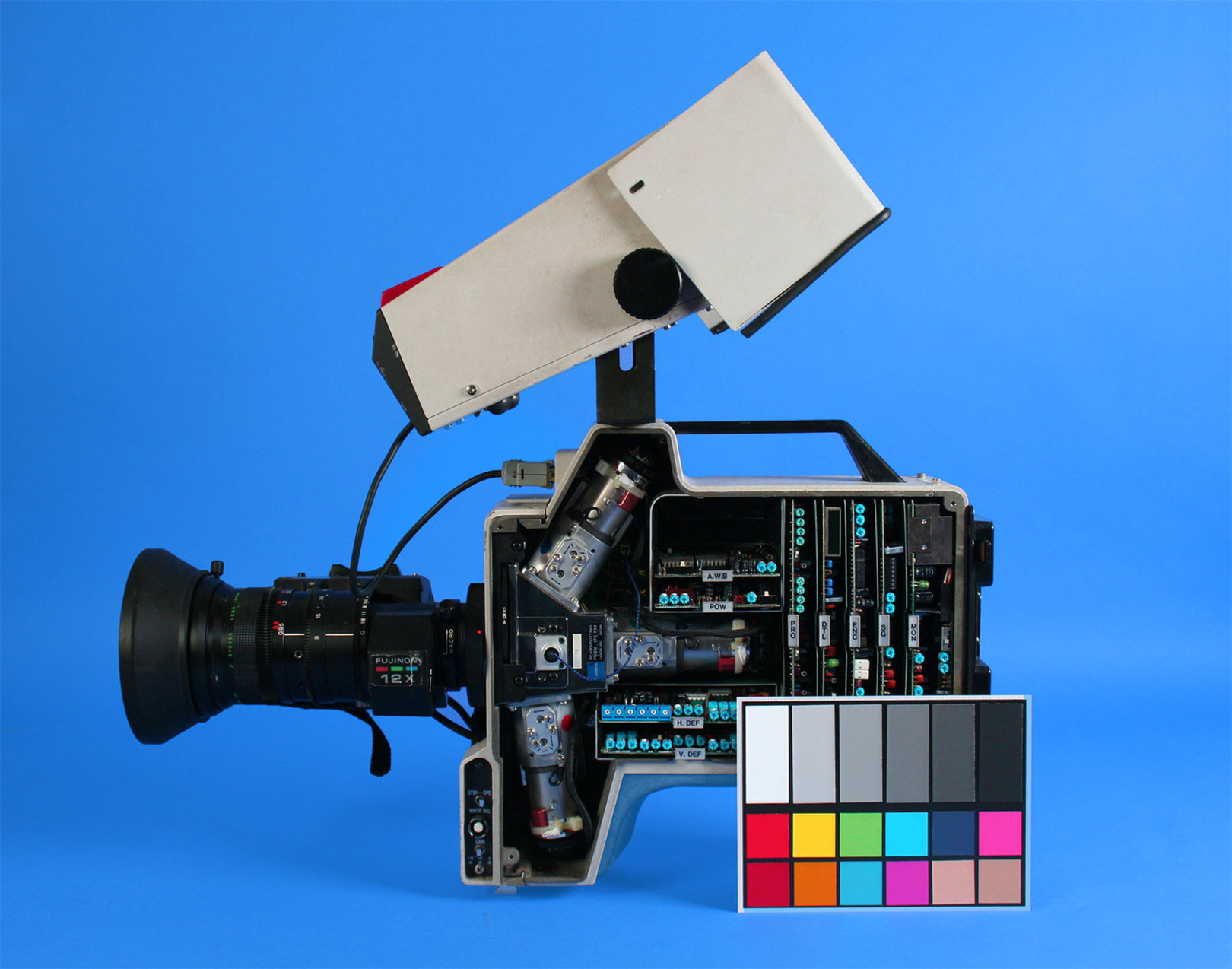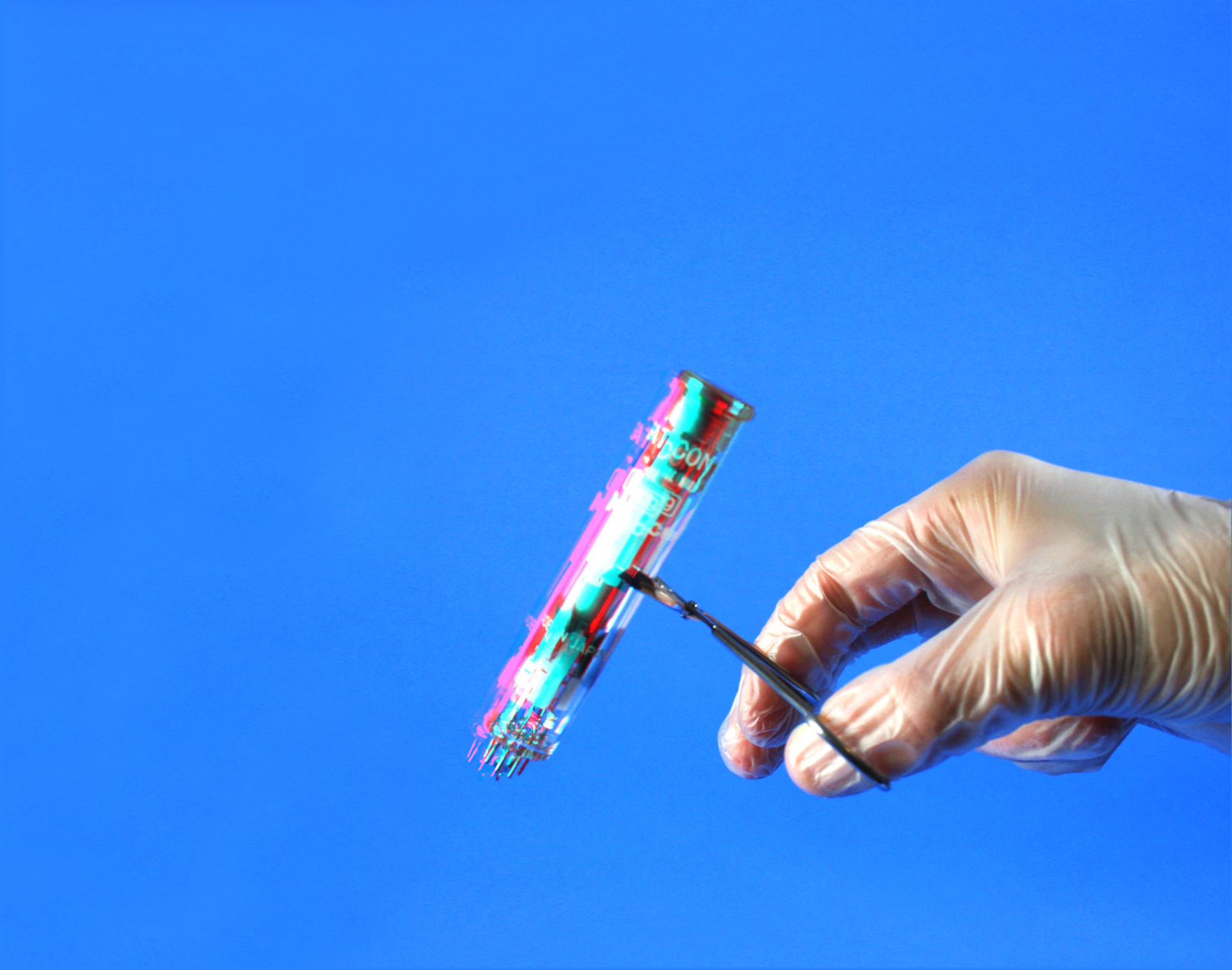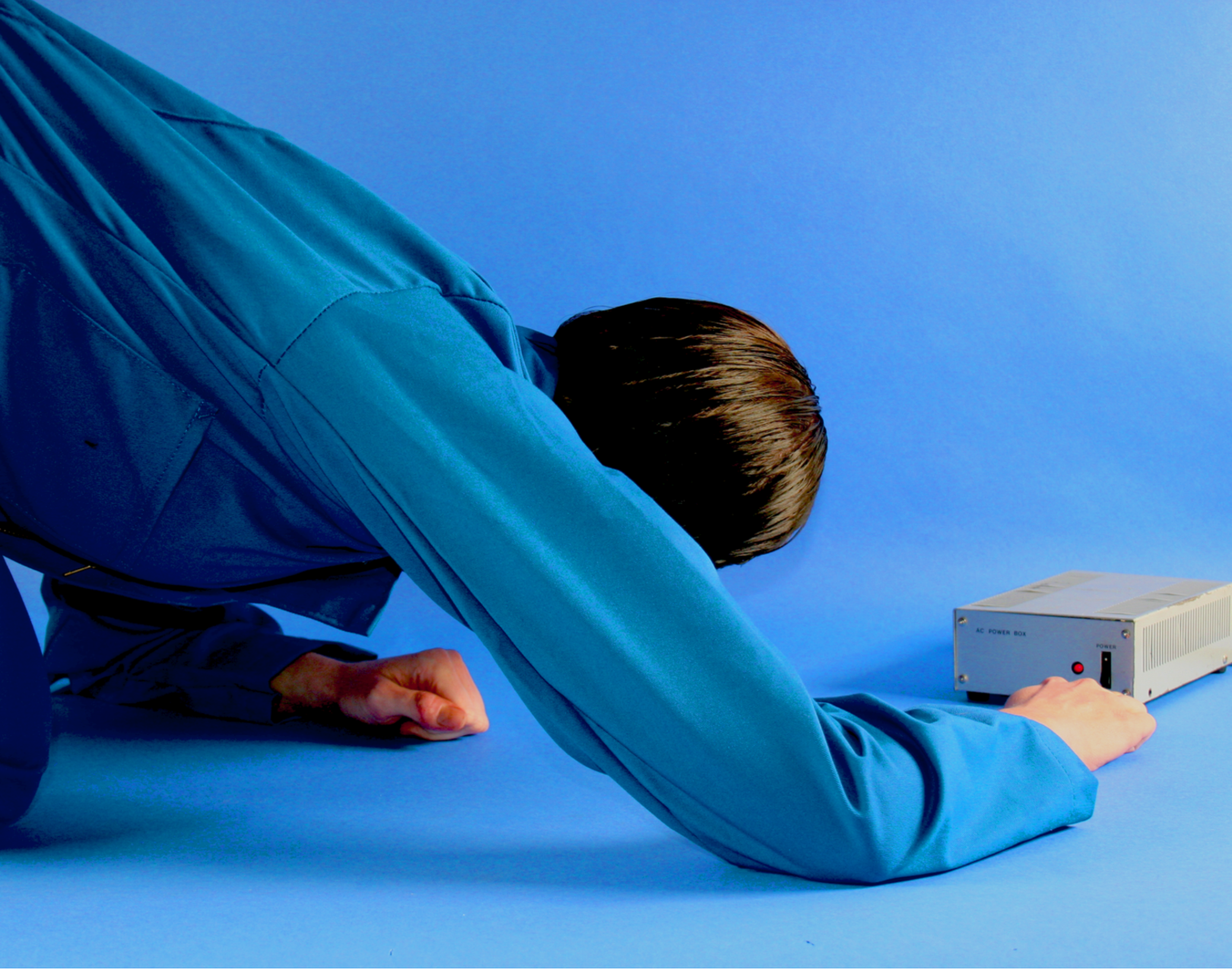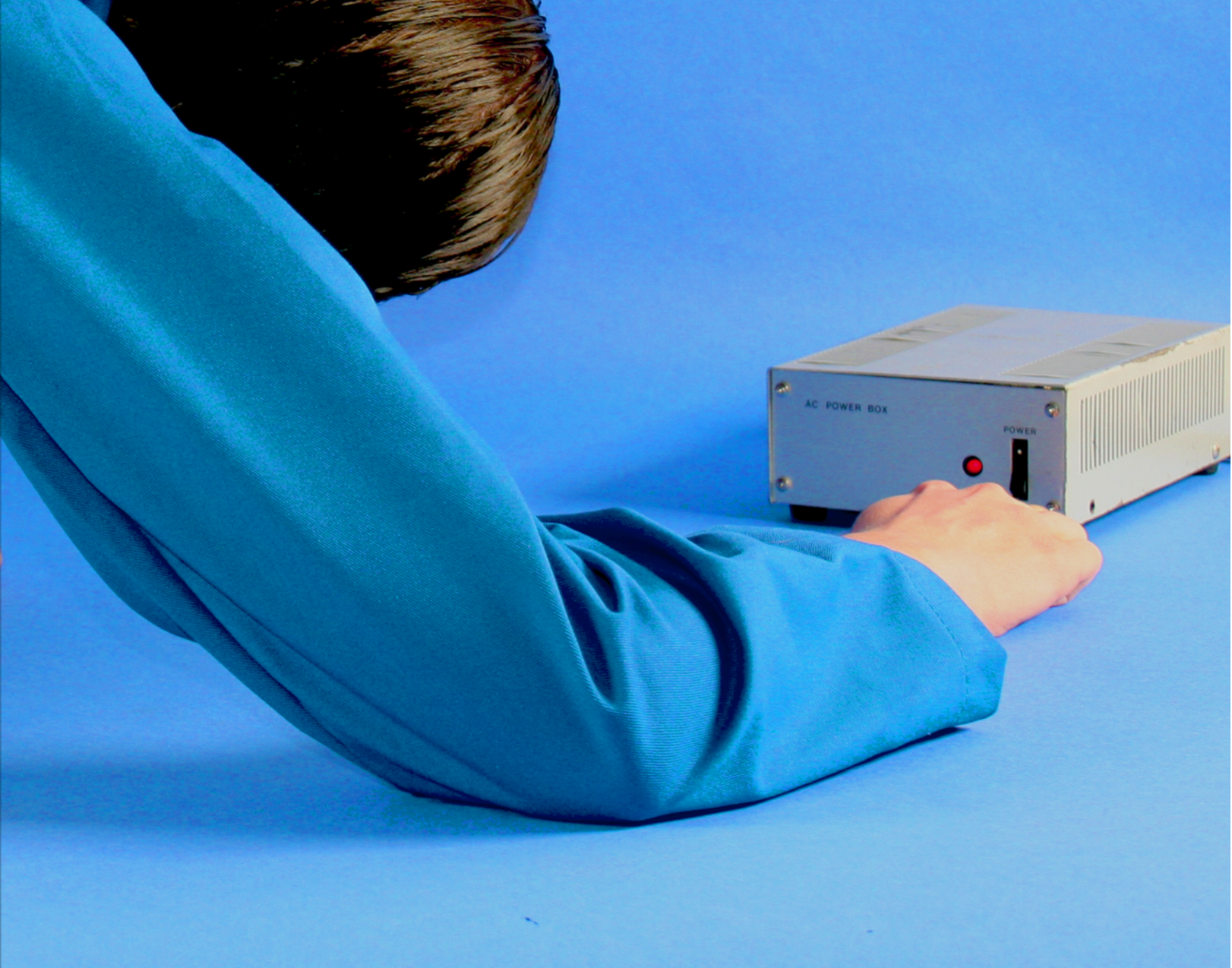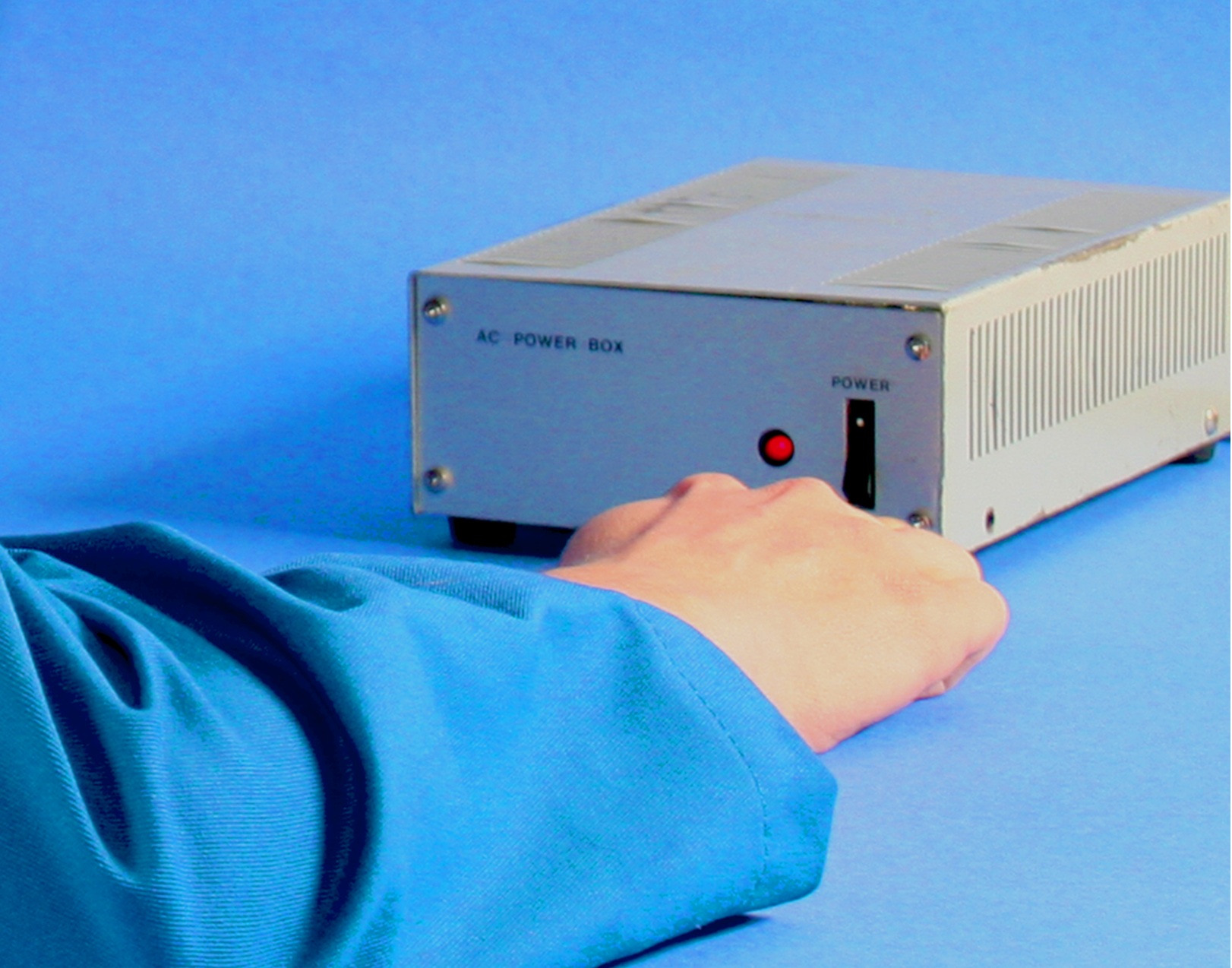E.S.P. TV : WORK
February 10 – March 26, 2017 | Pioneer Works, Brooklyn NY
For WORK, E.S.P. TV made Pioneer Works’ office staff and environment the subject of a six-week performative, televisual installation by relocating the organization’s second-floor, open-plan office to the first-floor’s main exhibition space. Surrounded by a de-centralized control room, the office doubled as both a dynamic sculptural set—painted partly in chroma blue and featuring movable walls, among other features—and the actual site for the staff’s five-day workweek. The staff’s “daily grind” was mixed live, on-site, with custom video effects and hourly commercial interruptions in the space. Far from peddling in the sensational tropes of reality TV, WORK instead turned banal, day-to-day office routines and patterns—the movement of a chair, a co-worker getting coffee—into the improbable, playful content of a serial program to be broadcast weekly on the Manhattan Neighborhood Network. E.S.P. TV worked closely with curator David Everitt Howe to envision this social experiment and exhibition, which responded to the building’s unique environment and tight-knit, collective office culture.
Recreated as a pastiche of a “contemporary” office, the installation featured a series of sculptural set pieces that could be activated in real-time or through the video editing process. A camera crew, live TV mixing consoles, monitors, and program feeds surrounded and permeated the working office. At the start of each workday, Pioneer Works staff functioned as both employees and cast members who “logged-in” to an evolving algorithm that combined their names with a glossary of camera shots and an office etiquette handbook. The resulting text generate an abstract script or textual narrative that informed both the episodes’ editing and their subtitles.
Working within galleries, museums, and artist-run and public spaces, E.S.P. TV’s television programs are taped before a live audience and place the labor of production in an equal spotlight with the artists and performers with whom they collaborate. These tapings reveal a new space born through a breakdown in the hierarchy of the producer and performer and an investigation of the aesthetic qualities of the “live TV studio set”—arising from subtle relationships of staging, timing, layers of observation and the line between shadow and shade of an evenly lit set. In many ways, the humorous, inquisitive, and convention-defying nature of E.S.P. TV carries on the tradition of institutional critique artists like Michael Asher. In the 1970s, Asher engaged in an art practice that broke down the separation between traditional roles of art production, exhibition, and public dissemination. An influential touchstone for E.S.P TV’s WORK is Asher's Via Los Angeles (1976) in which Asher recorded, and later broadcast, the behind-the-scenes interior of a local TV control room (Portland NBC affiliate KGW) while they were airing the Super Bowl.
For additional context, WORK featured video and printed ephemera from E.S.P. TV’s first 100 Episodes and 6 seasons on air in New York City. This multi-media collection draws on hundreds of collaborative efforts with local and international artists working in performance, video, sound, social practice, and more. Evoking this history, as well as the history of television and sound, a series of public programs featured screenings, performances, and an artist-led “staff retreat” to expound upon the major themes of the exhibition and activate the set outside of normal working hours.
Work was curated by David Everitt Howe, Curator/Editor at Pioneer Works.

